 | TODAY IN SCIENCE HISTORY
NEWSLETTER - 30 NOVEMBER |
| On 30 Nov 1866, work began on the first traffic tunnel under a U.S. river, the Washington Street Tunnel in Chicago, Illinois, under the Chicago River. It was built to alleviate traffic congestion at the river's swing bridges. Iopened 1 Jan 1869 and served until 1953. Cable car companies used the tunnel from 1880s to 1906. A short article in the New York Times on the River Tunnel at Chicago gives some more background. Whereas Brunel bored the world's first tunnel under a river, the Thames over many years of great difficulties, the Chicago River only needed a 200-ft tunnel, and the article describes the much simpler approach taken for its construction. |
 On 30 Nov 1886, the first successful alternating current power plant was opened by George Westinghouse in Buffalo, N.Y. Today's Science Store pick is: A Life of George Westinghouse (Business Biographies), by Henry G. Prout, who presents a vivid biography with emphasis on the scientific and business aspects of Westinghouse's career. He successfully beat Thomas Edison in supplying electrical power because Westinghouse had the vision to pursue alternating current instead of Edison's scheme for direct current. The practical differences were very much in Westinghouse's favour, and it is his outstanding scientific and business acumen that is responsible for initiating the power grid as we know it. Reading more about this important inventor is well worth your time It is available New from $30.67. Used from $30.60. (As of time of writing.). On 30 Nov 1886, the first successful alternating current power plant was opened by George Westinghouse in Buffalo, N.Y. Today's Science Store pick is: A Life of George Westinghouse (Business Biographies), by Henry G. Prout, who presents a vivid biography with emphasis on the scientific and business aspects of Westinghouse's career. He successfully beat Thomas Edison in supplying electrical power because Westinghouse had the vision to pursue alternating current instead of Edison's scheme for direct current. The practical differences were very much in Westinghouse's favour, and it is his outstanding scientific and business acumen that is responsible for initiating the power grid as we know it. Reading more about this important inventor is well worth your time It is available New from $30.67. Used from $30.60. (As of time of writing.). | | For picks from earlier newsletters, see the Today in Science History Science Store home page. | |
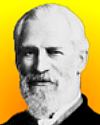 | [There is an] immense advantage to be gained by ample space and appropriate surroundings in aiding the formation of a just idea of the beauty and interest of each specimen... Nothing detracts so much from the enjoyment ... from a visit to a museum as the overcrowding of the specimens exhibited. - Sir William Henry Flower, English zoologist (born 30 Nov 1831).  |
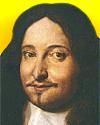 | In such sad circumstances I but see myself exalted by my own enemies, for in order to defeat some small works of mine they try to make the whole rational medicine and anatomy fall, as if I were myself these noble disciplines. - Marcello Malpighi, Italian physician, physiologist and biologist (died 30 Nov 1694).  |
| I have indeed lived and worked to my taste either in art or science. What more could a man desire? Knowledge has always been my goal. There is much that I shall leave behind undone�but something at least I was privileged to leave for the world to use, if it so intends�As the Latin poet said I will leave the table of the living like a guest who has eaten his fill. Yes, if I had another life to spend, I certainly would not waste it. But that cannot be, so why complain? - L�on Croizat, Italian biogeographer, and botanist (died 30 Nov 1982).  |
| Before you look at today's web page, see if you can answer some of these questions about the events that happened on this day. Some of the names are very familiar. Others will likely stump you. Tickle your curiosity with these questions, then check your answers on today's web page. |
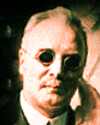 | Nils Dal�n, born 30 Nov 1869, was a Swedish engineer who won the Nobel Prize for Physics in 1912 for his invention of the automatic sun valve, which regulated a gaslight source by the action of sunlight and darkness It was used for buoys and unmanned lighthouses. In 1922, Dalen's Amalgamated Gas Accumulator Co. patented his design for a more efficient and cost-effective kitchen stove and began production. These stoves produced a radiant heat that kept the kitchen warm, and remains popular today.
 Can you name this popular stove? |
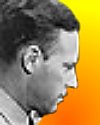 | Andrew J. Moyer, born 30 Nov 1899, was an American microbiologist who invented a method for mass-producing an antibiotic, using a fermentation process. This large-scale production saved thousands of lives during World War II.
 For which antibiotic did Moyer devise large-scale production? |
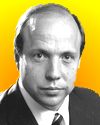 | Robert A. Swanson (1949-1999) was an American chemist who co-founded Genentech, Inc., a pioneer in the biotechnology industry. In 1978, Genentech created the first drug produced by genetic engineering.
 What was Genentech's drug, the first to be produced by genetic engineering? |
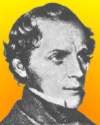 | Nils Gabriel Sefstr�m (1787-1845) was a Swedish chemist who investigated a black powder a mine manager had pointed out could be obtained from a certain iron ore. Although it was similar to chromium and uranium, by analysis Sefstr�m determined it was a new element. He named it after a Norse goddess.
 What new element did Sefstr�m investigate? |
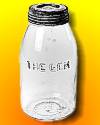 | On 30 Nov of a certain year, John Landis Mason received a U.S. patent for his invention known by his name. The Mason jar has become a common term for the still widely used preserved food jar.
 In which decade was patent issued? |
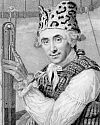 | On 30 Nov 1784, American physician and scientist John Jeffries recorded the first scientific data for free air, to a height of 9,309-ft, including twelve observations of temperature, pressure, and humidity. Jeffries' values agree closely with modern determinations.
 How did he travel to such a great height? |
When you have your answers ready to all the questions above, you'll find all the information to check them, and more, on the November 30 web page of Today in Science History. Or, try this link first for just the brief answers.
Fast answers for the previous newsletter for November 29: Fields Medal • insulin • Christian Doppler • Lord Byron • 100 • Nevada. |
 If you enjoy this newsletter, the website, or wish to offer encouragement or ideas, please send feedback by using your mail reader Reply button. If you enjoy this newsletter, the website, or wish to offer encouragement or ideas, please send feedback by using your mail reader Reply button.
Your click on a StumbleUpon, Google+ or Facebook social button on the site webpages is also a welcome sign of appreciation. Thank you for using them. |
To find citations for quotations go to the corresponding webpage by clicking on the “quotes” balloon icon. Sources for the thumbnails appear on today's webpage with the corresponding item.
� This newsletter is copyright 2013 by todayinsci.com. Please respect the Webmaster's wishes and do not put copies online of the Newsletter � or any Today in Science History webpage. (If you already have done so, please remove them. Thank you.) Offline use in education is encouraged such as a printout on a bulletin board, or projected for classroom viewing. Online, descriptive links to our pages are welcomed, as these will provide a reader with the most recent revisions, additions and/or corrections of a webpage. For any other copyright questions, please contact the Webmaster by using your mail reader Reply button. |
--
If you do not want to receive any more newsletters,
Unsubscribe To update your preferences and to unsubscribe visit
this link 





 Can you name this popular stove?
Can you name this popular stove? 
 For which antibiotic did Moyer devise large-scale production?
For which antibiotic did Moyer devise large-scale production? 
 What was Genentech's drug, the first to be produced by genetic engineering?
What was Genentech's drug, the first to be produced by genetic engineering? 
 What new element did Sefstr�m investigate?
What new element did Sefstr�m investigate? 
 In which decade was patent issued?
In which decade was patent issued? 
 How did he travel to such a great height?
How did he travel to such a great height?  If you enjoy this newsletter, the website, or wish to offer encouragement or ideas, please send feedback by using your mail reader Reply button.
If you enjoy this newsletter, the website, or wish to offer encouragement or ideas, please send feedback by using your mail reader Reply button. 

Δεν υπάρχουν σχόλια:
Δημοσίευση σχολίου